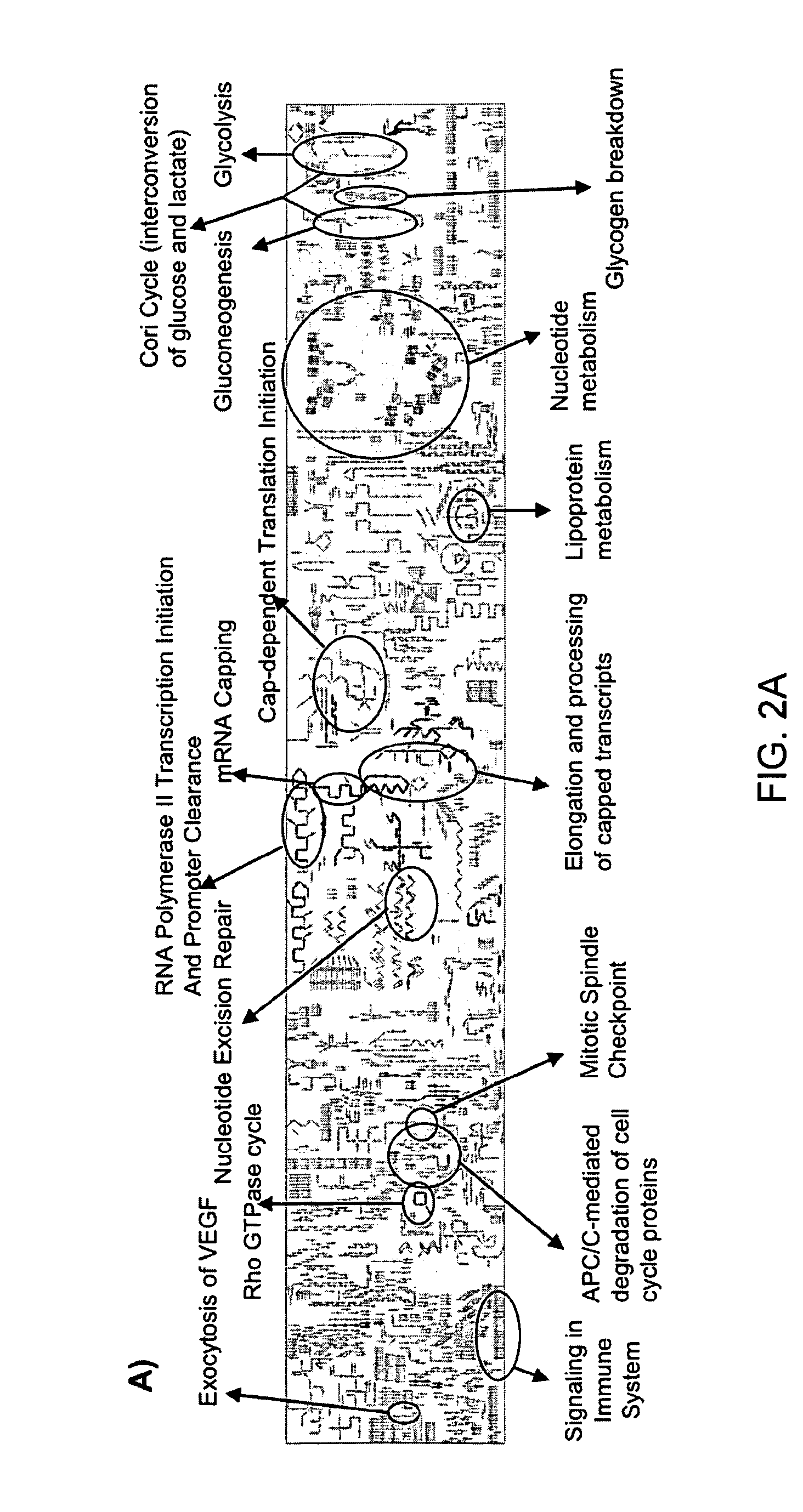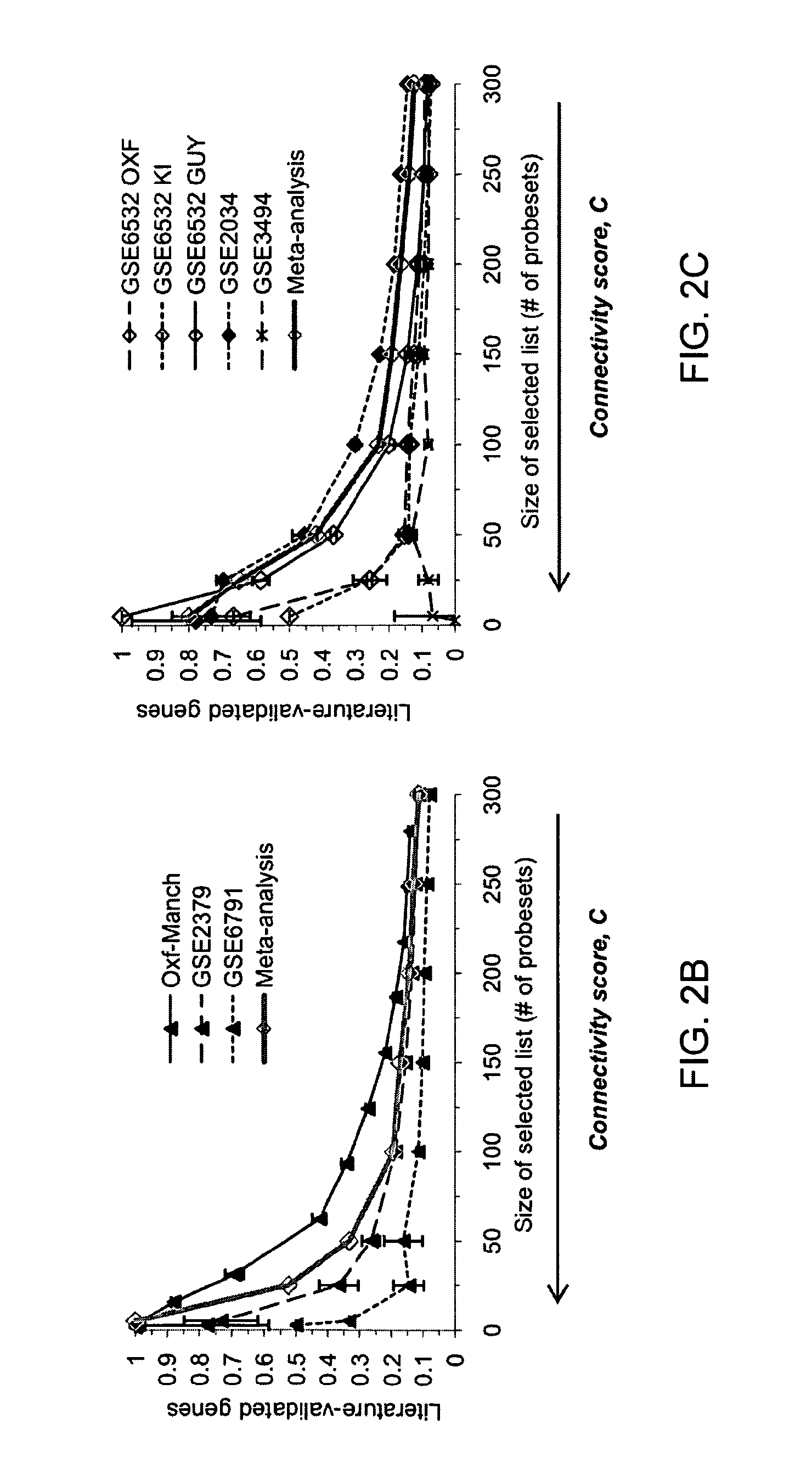Hypoxia tumour markers
a tumour marker and hyperoxia technology, applied in the field of methods of assessing and classifying tumour characteristics, can solve the problem of not being an optimal solution for assessing the hypoxia phenotype of tumours, and achieve the effect of facilitating prioritising treatmen
- Summary
- Abstract
- Description
- Claims
- Application Information
AI Technical Summary
Benefits of technology
Problems solved by technology
Method used
Image
Examples
example 1
Deriving a Hypoxia Gene Expression Signature
Large-Meta Analysis of Multiple Cancers Reveals a Common, Compact and Highly Prognostic Hypoxia Metagene
[0124]Introduction
[0125]Gene-expression studies attempt to extrapolate biologically and clinically relevant hypotheses from gene expression patterns. However, many current studies make little use of existing knowledge such as gene function within specific pathways, and prognostic signatures are often derived with no reference to the functional roles of their components.
[0126]One increasingly popular method that aims to make use of prior knowledge is Gene Set Enrichment Analysis (GSEA) (Subramanian et al, 2005). GSEA first conducts a supervised analysis by ranking genes according to their ability to discriminate between different sample groups, and then maps them onto previously defined gene-sets, typically formed according to common function using annotation sources. The goal is to identify sets containing a statistically significant num...
example 2
Metagene Sets
[0169]Common Steps for the Head and Neck and Breast Cancer Signatures:
[0170]1) Pre-Processing of Array Data:
[0171]Data were normalized using gcrma in Bioconductor (http: / / www.bioconductor or 0 and log 2 expression was considerd.
[0172]2) Annotation
[0173]The NBC! database, BiomaRt and Matchminer were used to retrieve other aliases and previous IDs for the seeds.
[0174]3) Filtering
[0175]Filtering was performed based on expression levels and coefficient of variation:—gene were selected for the clustering if their expression level was above the 0.55 quantile, and their coefficient of variation was above the 0.10 quantile, of the global array distribution for expression and CV respectively. To avoid noise arising from cross-contamination in some of the arrays; filtering of unspecific probestes was done using array information provided by Affymetrix. Specifically, probesets with termination x at in the U133 plus2 array, and probesets with termination s at and g at in the U95 ar...
PUM
| Property | Measurement | Unit |
|---|---|---|
| overall survival time | aaaaa | aaaaa |
| metastases-free survival time | aaaaa | aaaaa |
| recurrence-free survival time | aaaaa | aaaaa |
Abstract
Description
Claims
Application Information
 Login to View More
Login to View More - R&D
- Intellectual Property
- Life Sciences
- Materials
- Tech Scout
- Unparalleled Data Quality
- Higher Quality Content
- 60% Fewer Hallucinations
Browse by: Latest US Patents, China's latest patents, Technical Efficacy Thesaurus, Application Domain, Technology Topic, Popular Technical Reports.
© 2025 PatSnap. All rights reserved.Legal|Privacy policy|Modern Slavery Act Transparency Statement|Sitemap|About US| Contact US: help@patsnap.com



